Pharos Of Alexandria – One Of The First Lighthouses In The Ancient World
AncientPages.com - The Lighthouse of Alexandria, one of the Seven Wonders of the Ancient World, is also known as the Pharos at Alexandria. Built at the beginning of the 3rd century BC, by the Greek architect Sostratus of Cnidus, for the purpose of guiding sailors into the harbor, it was finished during the reign of Soter’s son Ptolemy II of Egypt in about 280 BC.
It was impressive in its construction and scale, and legends say that its light was visible in the harbor from 35 miles away. There was a mirror on the top of the Lighthouse that was probably made of bronze that reflected the light.

One of the first lighthouses of the Ancient World. Illustration of the Pharos of Alexandria by Maerten van Heemskerck.
The lighthouse was badly damaged in the earthquake of 956, and then two other earthquakes, in 1303 and 1323, which totally devastated the structure.
Between 1994 and 1996, a team of archaeologists led by the French archaeologist Jean-Yves Empereur localized remains of the lighthouse on the floor of Alexandria's Eastern Harbour.
Jean-Yves Empereur said that:
'From the fourth century until the 14th century, there were earthquakes in Alexandria.
According to several the Arab sources alone you have more than 20 mentions of earthquakes, which affected the lighthouse. And we know that in the 14th century, after the Arabs had made some repairs to the lighthouse, the lighthouse collapsed due to very severe earthquakes.
There is a map in Montpelier, a town in southern France, which indicates that in 1303 the lighthouse of Alexandria was destroyed.
In fact, there is an Arab traveler, his name is Ibn Battuta, who came to Alexandria in 1326 for the first time.
And he writes, "I could have access to the door of the first floor of the lighthouse." And when he comes back to Alexandria in 1349, he says, "No access to this door. Everything here has collapsed."

Lighthouse remains found in the Mediterranean Sea. Columns at the underwater museum near the former lighthouse, Alexandria, Egypt. Photo credits: Roland Unger/Wikipedia
So in fact, in the first half of the 14th century that very strong earthquake put an end to this tower,' Empereur explained.
This earthquake made the lighthouse collapse in a kind of line from the seashore. And we found a dozen fallen pieces under the sea in a line. Some of these pieces were in fact broken in two or three fragments, each of which is about 20 or 30 tons.'
According to Greco-Roman archaeology professor Fathy Khourshid, the entire structure of the Lighthouse was approximately 400 feet tall including the base and comprised three stages: a lower square section with a central core, a middle octagonal section and a circular section at its top.
Ancient accounts such as those by Pliny the Elder and Strabo give us a brief description of the "tower" and the magnificent white marble cover.
The white marble tower was between 393 and 450 ft (120 and 137 m) tall and one could see ships located 100 miles far away. It was one of the tallest man-made structures in the world for many centuries.
Angles were decorated with bronze tritons which was used either to warn of the approach of the enemy by terrifying sounds, but also to carry mirrors which, during the night, reflected the light of a fire. In the daytime, the smoke helped the boats to locate the entrance of the port.
The internal core was used as a shaft to lift the fuel needed for the fire.
The lighthouse of Alexandria - the symbol of the technical exploit shown by the Egyptians - was unique and one of the first lighthouses of the Ancient World.
It will be rebuilt close to the original site.
Copyright © AncientPages.com All rights reserved. This material may not be published, broadcast, rewritten or redistributed in whole or part without the express written permission of AncientPages.com
Expand for referencesMore From Ancient Pages
-
 Strange Mist, Unexplained Vanishings And Other Bizarre Incidents – What Is The Connection?
Featured Stories | Mar 8, 2019
Strange Mist, Unexplained Vanishings And Other Bizarre Incidents – What Is The Connection?
Featured Stories | Mar 8, 2019 -
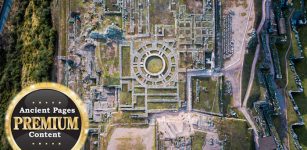 Unraveling The Mystery Of The Celestial Matrix
Featured Stories | Sep 30, 2021
Unraveling The Mystery Of The Celestial Matrix
Featured Stories | Sep 30, 2021 -
 Heyoka – Sacred Clown Who By Doing The Opposite Helps And Guides In Daily Life
Featured Stories | Feb 7, 2019
Heyoka – Sacred Clown Who By Doing The Opposite Helps And Guides In Daily Life
Featured Stories | Feb 7, 2019 -
 Clan MacGregor: Fearless, Lawless And Persecuted Clan Of The Highlands
Featured Stories | Jul 9, 2018
Clan MacGregor: Fearless, Lawless And Persecuted Clan Of The Highlands
Featured Stories | Jul 9, 2018 -
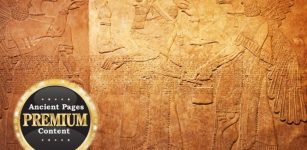 Mysterious Sumerian Star Tablet And Strange Divine Omens – Communication With The Gods – Part 2
Featured Stories | Feb 18, 2021
Mysterious Sumerian Star Tablet And Strange Divine Omens – Communication With The Gods – Part 2
Featured Stories | Feb 18, 2021 -
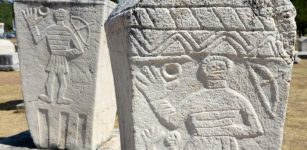 Enigmatic ‘Stone Sleepers’ – Megalithic Tombstones ‘Stecci’ In The Western Balkans
Civilizations | Dec 3, 2018
Enigmatic ‘Stone Sleepers’ – Megalithic Tombstones ‘Stecci’ In The Western Balkans
Civilizations | Dec 3, 2018 -
 Mysterious Unknown Beings Who Walked The Earth With Humans
Featured Stories | Sep 15, 2020
Mysterious Unknown Beings Who Walked The Earth With Humans
Featured Stories | Sep 15, 2020 -
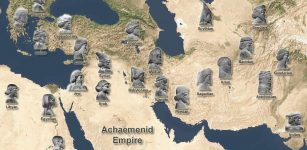 Achaemenid Empire Was The World’s Largest Ancient Empire
Ancient History Facts | Mar 26, 2016
Achaemenid Empire Was The World’s Largest Ancient Empire
Ancient History Facts | Mar 26, 2016 -
 Antediluvian Sacred Tablets And Rare Manuscript Reveal Secret Ancient Egyptian Knowledge
Featured Stories | Apr 13, 2018
Antediluvian Sacred Tablets And Rare Manuscript Reveal Secret Ancient Egyptian Knowledge
Featured Stories | Apr 13, 2018 -
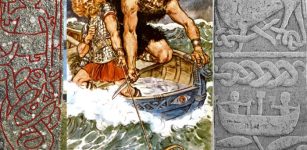 Thor And Tyr Journey To Hymir’s Hall To Steal Huge Cauldron – In Norse Mythology
Featured Stories | Jun 6, 2023
Thor And Tyr Journey To Hymir’s Hall To Steal Huge Cauldron – In Norse Mythology
Featured Stories | Jun 6, 2023 -
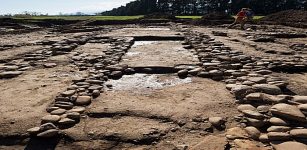 Sanctuary Of God Mithra And His Mysterious Religion Unearthed In Corsica
Archaeology | Mar 2, 2017
Sanctuary Of God Mithra And His Mysterious Religion Unearthed In Corsica
Archaeology | Mar 2, 2017 -
 The Curse Of Chief Chocorua Who Died On The Mountain That Bears His Name
Featured Stories | Mar 9, 2019
The Curse Of Chief Chocorua Who Died On The Mountain That Bears His Name
Featured Stories | Mar 9, 2019 -
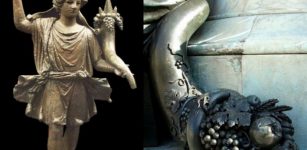 Cornucopia – ‘Horn Of Plenty’ – Ancient Symbol And Its Almost Forgotten Meaning
Ancient Symbols | Jan 14, 2019
Cornucopia – ‘Horn Of Plenty’ – Ancient Symbol And Its Almost Forgotten Meaning
Ancient Symbols | Jan 14, 2019 -
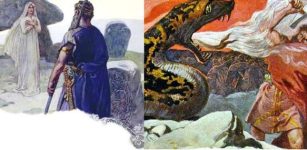 Völuspá – Norse Prophecy Of The Völva, A Feared Shaman By The Vikings
Featured Stories | Mar 26, 2018
Völuspá – Norse Prophecy Of The Völva, A Feared Shaman By The Vikings
Featured Stories | Mar 26, 2018 -
 Orang Bunian: Mysterious Invisible Whistle People Living In Forests In Malay Folklore
Featured Stories | Jul 15, 2016
Orang Bunian: Mysterious Invisible Whistle People Living In Forests In Malay Folklore
Featured Stories | Jul 15, 2016 -
 Florida’s Ancient Calusa Kingdom Developed Sophisticatedly Engineered ‘Watercourts’
Archaeology | Apr 1, 2020
Florida’s Ancient Calusa Kingdom Developed Sophisticatedly Engineered ‘Watercourts’
Archaeology | Apr 1, 2020 -
 Mystery Of The Ancient Moonless Ones – Strange Tales Of Unusual Lost Civilizations
Featured Stories | Jan 29, 2022
Mystery Of The Ancient Moonless Ones – Strange Tales Of Unusual Lost Civilizations
Featured Stories | Jan 29, 2022 -
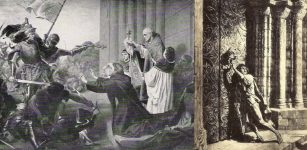 Medieval Criminals Could Avoid Persecution By Claiming Sanctuary In Churches
Ancient History Facts | Mar 3, 2017
Medieval Criminals Could Avoid Persecution By Claiming Sanctuary In Churches
Ancient History Facts | Mar 3, 2017 -
 Ancient Manuscript In Museum Reveals Discovery Of Objects Unknown To Modern Science – Inside The Chamber – Part 1
Featured Stories | Apr 8, 2021
Ancient Manuscript In Museum Reveals Discovery Of Objects Unknown To Modern Science – Inside The Chamber – Part 1
Featured Stories | Apr 8, 2021 -
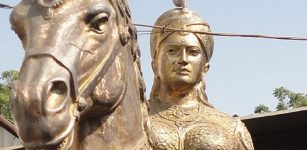 Rudrama Devi – Warrior Queen Of The Kakatiya Dynasty And First Female Ruler Of South India
Featured Stories | Jul 27, 2021
Rudrama Devi – Warrior Queen Of The Kakatiya Dynasty And First Female Ruler Of South India
Featured Stories | Jul 27, 2021


